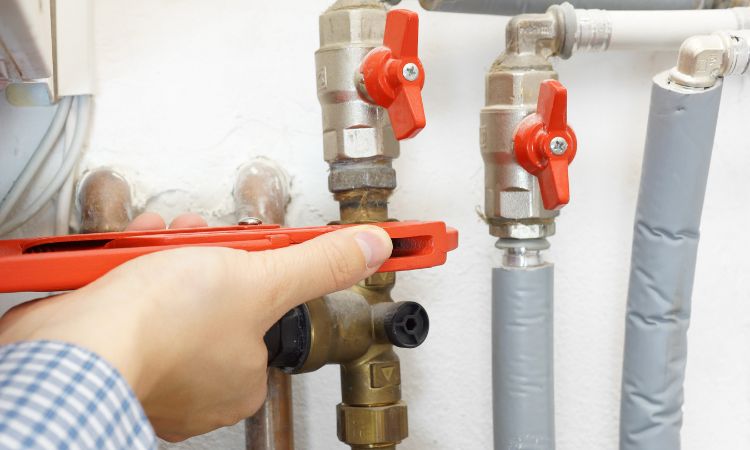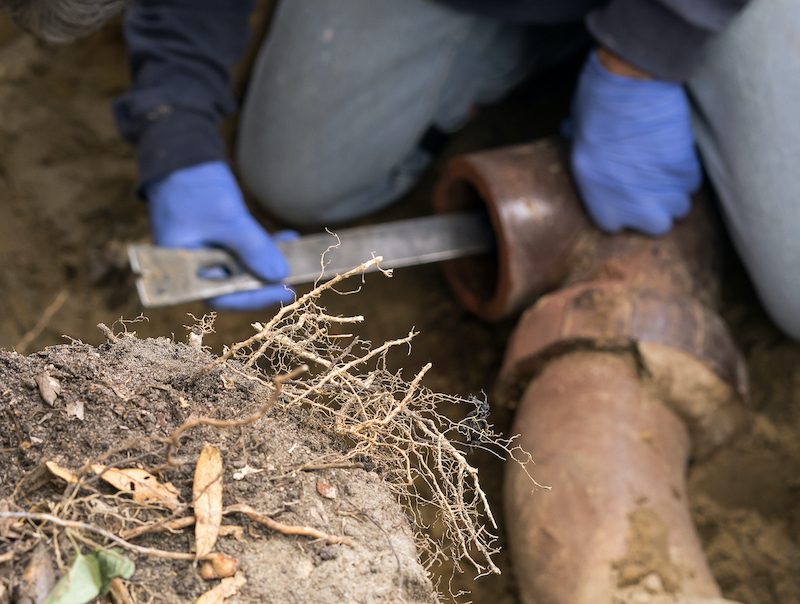Effective Ways to Address Plumbing Issues in Older Homes
Effective Ways to Address Plumbing Issues in Older Homes
Blog Article
What are your insights and beliefs about Main Plumbing Issues Found in Old Houses?

Older homes typically feature beauty, personality, and background, however they can additionally bring a host of plumbing concerns. Whether you're taking care of aging pipes, low water stress, or leakages, knowing just how to resolve these typical problems is critical to maintaining a secure and practical home. In this guide, we'll explore the normal plumbing challenges encountered by older homes and supply practical services to maintain your plumbing in leading shape.
Recognizing Common Pipes Issues
Aging Pipes
Among the most typical issues in older homes is aging pipelines. Depending upon the era in which your home was constructed, the pipes may be made from products that have worn away in time, such as galvanized steel, cast iron, or perhaps lead. These products can corrode, come to be brittle, or establish leakages, leading to water damage and possible health hazards.
Water High Quality Screening
Older pipes can impact the top quality of your water. Conduct a water quality test to look for impurities such as lead, rust, or other pollutants that might be introduced by aging pipes.
Solutions for Typical Pipes Issues
Replacing Aging Pipelines
If your home has old, weakening pipelines, take into consideration changing them with modern products like copper or PEX. This can be a significant investment, yet it will certainly protect against future issues and enhance the safety and security and integrity of your plumbing system.
Repairing Low Tide Pressure
To take care of low tide stress, start by cleaning or replacing old fixtures and eliminating mineral build-up in the pipelines. If the problem persists, it may be required to change sections of rusty pipes.
Repairing and Replacing Dripping Pipes
For little leakages, you can use pipe clamps or epoxy putty as a momentary repair. Nonetheless, it's best to change leaking pipelines completely to stay clear of more damage.
Upgrading Components
Upgrading old components to contemporary, water-efficient versions can boost your home's plumbing performance and decrease water usage. Search for components with the WaterSense tag for the very best effectiveness.
Dealing with Pipe Deterioration
If your pipes are rusted, changing them with corrosion-resistant products like copper, PVC, or PEX is the most effective option. Routine assessments and water high quality maintenance can help prevent better deterioration.
Low Water Pressure
If you're experiencing low tide stress, maybe as a result of natural resources, corrosion inside the pipes, or old components that are no longer functioning successfully. This can be a significant trouble, particularly in areas like showers and sinks.
Dripping Pipes
Leaks are another frequent problem in older homes, commonly triggered by corroded or worn-out pipes. Also tiny leaks can result in considerable water damage, mold development, and enhanced water bills if not addressed without delay.
Out-of-date Fixtures
Obsolete plumbing components such as taps, toilets, and showerheads not just look old but may additionally be much less effective, prone to leaks, or inappropriate with contemporary plumbing requirements.
Pipe Rust
Corrosion is an usual problem in older pipelines, particularly those made from galvanized steel or actors iron. Corroded pipelines can limit water flow, create discoloration, and at some point cause leaks or pipeline bursts.
Analyzing the Condition of Your Pipes
Checking Noticeable Pipes
Begin by inspecting any kind of visible pipelines in your home, such as those in basements, crawl spaces, or under sinks. Try to find indications of rust, leakages, or rust, which can indicate underlying problems.
Checking for Leakages
Check for leakages by checking areas around taps, toilets, and under sinks. You can likewise monitor your water meter prior to and after a period of no water use to spot concealed leakages.
When to Call an Expert
While some pipes concerns can be taken care of with do it yourself remedies, there are times when it's best to call a professional. If you're managing significant leaks, considerable rust, or are uncertain about the problem of your pipes, an accredited plumbing professional can offer expert assessment and repair.
Preventive Upkeep Tips
Routine Evaluations
Regularly check your pipes system for indications of wear and tear. Capturing problems early can avoid pricey repairs down the line.
Water Stress Policy
Guarantee your water stress is within the recommended variety to prevent worrying your pipelines and components. A plumber can install a stress regulatory authority if needed.
Water High Quality Upkeep
Set up water filters or softeners if your water high quality is poor. This can protect your pipes and components from damages brought on by tough water or impurities.
Proactive Pipe Replacement
If your home has very old pipes, think about aggressive substitute prior to major problems occur. This can conserve you from emergency repair work and water damage.
Conclusion
Managing pipes problems in older homes needs a mix of alertness, preventative upkeep, and prompt upgrades. By comprehending the common challenges and knowing when to look for professional help, you can ensure your plumbing system stays practical and reliable for years to find.
7 Common Plumbing Issues in Older Homes
Read More Plumbing Articles
Whether you're mulling over purchasing your dream period property, or you already own one, being aware of common plumbing problems in old homes can help you avoid expensive mishaps.
Many plumbing problems in old homes are similar to those faced in newer properties, but some are more prevalent in houses over a certain age. If you've recently bought an old house or haven't had your aging plumbing system inspected in a while, it's worth keeping an eye out for the following issues:
Bad Pipe Materials
Depending on the age of your home, the pipe materials used in your plumbing system may not comply with modern building codes and could be unsafe.
Lead pipes are the most dangerous type of old plumbing pipes. This metal was once used extensively for manufacturing water pipes because it's easy to shape and has a long lifespan. Plumbers also used it to solder joints between pipes made from other materials. However, lead can cause serious health problems, particularly in children. Drinking water from pipes containing lead can lead to lead poisoning symptoms, such as stomach pain and fatigue, so it's essential to replace them if you discover them in your home.
Outdated Fixtures
Even if the previous owners installed high-quality fixtures, these won't be immune to the effects of age and wear and tear. Over time, fixtures can corrode and wear down, increasing the likelihood of leaks and clogs.
Sometimes, an outdated fixture can be a minor irritation that makes using your plumbing system less convenient. However, it's best to maintain older plumbing components carefully and replace them when they show signs of failure to avoid a major leak and water damage.
Corroded or Leaking Pipes
Corroded pipes are a common plumbing issue in old homes. Corrosive substances in the water supply can gradually break down the metal used to make the pipes, eventually causing leaks. Corrosion can also cause sediment to build up, increasing the chances of a clogged pipe. All these issues take time to develop, making them more likely in old house plumbing.
Drain Problems
Older home drainage systems were often installed before the arrival of appliances such as garbage disposals, so they're frequently incapable of handling modern household usage. The result could be frequent clogs or water backing up into sinks and other fixtures.
A failing sewer line is the most serious drainage issue commonly encountered in old houses. This problem is more likely if you've remodeled your home to add more fixtures, placing more pressure on a sewer line not designed for the purpose. Eventually, the line can become clogged, causing unpleasant indoor smells, poor drainage and contaminated wastewater backing up into your fixtures.
Pipe Bellies
Pipe bellies develop when pipes buried in your home's foundation start sagging as the building settles. They create downward slopes, affecting water drainage and increasing the risk of significant blockages. You don't need to worry about pipe bellies in a pressurized main line, as the water pressure prevents the pipes from clogging, but they can cause issues in drain lines.
Root Intrusion
Root intrusion occurs when trees and other shrubs grow roots too close to your sewer line or water service line. Sometimes, the roots penetrate the pipe walls, leading to leaks and soft or wet areas in your yard.
Unfortunately, root intrusion is a more common plumbing problem in old homes. That's because older houses are more likely to have pipe bellies allowing standing water to accumulate, attracting roots to the moist conditions.
https://www.elocal.com/resources/home-improvement/plumbing/faq/plumbing-issues-in-older-homes/

Hopefully you enjoyed our part about Plumbing Problems In Old Homes. Thanks a ton for taking a few minutes to read our content. Do you know another person who is enthusiastic about Plumbing Problems In Old Homes? Feel free to share it. I praise you for being here. Kindly come visit our site back soon.
About This Report this page